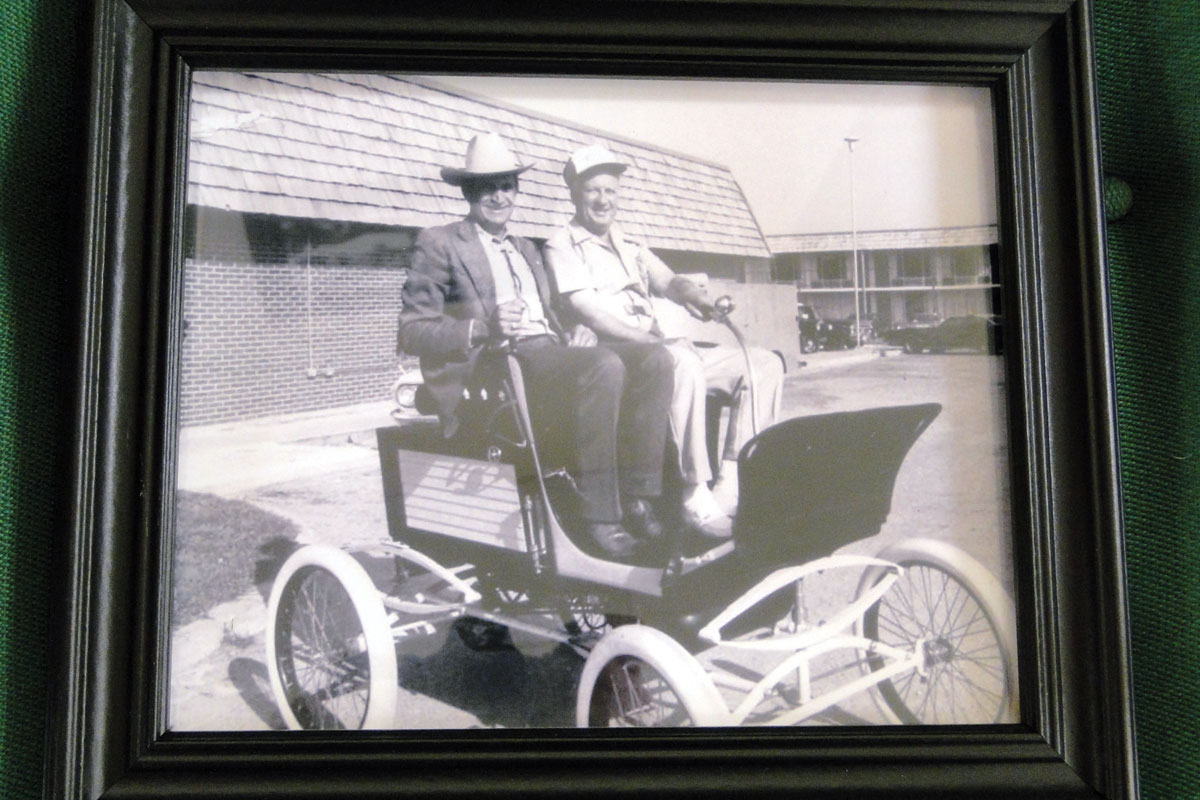
The Correll Museum displays the treasures complied by D.W. Correll
D.W. Correll was one of those self-taught, self-made men resulting from growing up during the Great Depression and Dust Bowl – long before the Internet made knowledge so accessible.
D.W. was the son of a blacksmith, so perhaps it was natural for him to develop a love for all things mechanical. He went from working on airplanes during World War II to becoming one of the first jet engine mechanics in the country. Later, he evolved into a construction business owner, but his love of mechanics never left, as evidenced by the collection of antique automobiles that he lovingly restored throughout his lifetime. The D.W. Correll Museum, located in Catoosa, Okla., is a reflection of a highly creative and knowledgeable man with collections ranging from antique vehicles to rocks and bottles. The museum’s collection is vast, including more than 500 bottles and decanters from the 1880s to the 1970s and more than 10,000 rocks, minerals, crystals and fossils.
Eric Hamshar, the museum’s director and curator, started as a social science/history intern from Rogers State University in 2011 with the intention of becoming a teacher. Two weeks into that internship, Eric was introduced “hands-on” to the extent of the collection when a 2-foot snowstorm caved in the roof of the rock display building.
“If that building had held the car collection, the results would’ve been disastrous, but the roof settled on top of the display cases with surprisingly little loss,” Eric said. “However, I learned how massive his collection is, and I am still cataloguing items in semi-permanent and permanent storage.”
Next the curator position opened. Eric graduated on a Friday and began as curator and director the following Monday. The position is a perfect fit because it taps into Eric’s own interests in antique cars and local history, as well as allowing him the opportunity to put his stamp on the museum. He strives to maintain D.W.’s diverse vision while organizing and updating displays and procedures as well as delving into the world of rocks and minerals.
“Eric is the best thing to ever happen to us. Dad would have been proud to see his collection receive such professional care and enthusiasm,” Dan Correll, one of D.W.’s two sons, said.
While guns and differently sized bullets, including the paper ones for muskets, were D.W.’s first collection, his marriage to Penny, mother of his two sons, Dan and Don, sparked another: antique vehicles. When Penny turned 16, her father gave her a 1914 Dodge, the very first Dodge model after the Dodge brothers broke away from Henry Ford. When the Correll couple moved from California back to family in Oklahoma, D.W. restored that already antique vehicle, who died in 1998.
“My dad would never ask anyone to do anything he wouldn’t do, but he was a very hard worker and expected his kids to be as well. I remember being in the third or fourth grade and having to sand wooden spokes for some of those old vehicles,” Dan said.
D.W.’s love of rocks, minerals, gems and jewelry began when he and his father-in-law Hank invested in a gold mine. That mine never produced much gold but gave birth to D.W.’s desire to study unusual rocks, which often ended up on top of the family refrigerator.
A similar love of bottles and decanters began with his uncle Ben’s collection. Ben was a builder in the early days of Tulsa. Much later, as Tulsa grew and modernized, D.W. worked with his uncle to demolish some of the very houses Ben had built years earlier. Many old bottles were found in the process, and Ben began collecting them. Later, Ben gave the collection to D.W., and it served as the foundation of what would eventually become the large collection of bottles on display at the museum. Some of the oldest bottles contained lead, which turned the glass purple when exposed to sunlight over the years.
When D.W. started adding to his uncle’s collection, he often boiled the bottles and decanters in order to remove labels and tax stamps. He wanted his bottles to be in pristine condition, only to learn later, much to his dismay, the bottles were worth more with the labels and stamps. Needless to say, D.W. stopped boiling.
After World War II, D.W. designed a trailer park that held 1,100 trailers and served as a model for that newly emerging lifestyle. The sale of that property in the 1950s provided funds and increased time four D.W. to pursue his love of collecting. He went to swap meets and auctions of all kinds and traveled frequently to Colorado, Arizona and New Mexico. He also made excursions to Mexico and South America to collect unusual rocks and minerals.
Eric’s position is continually sending him on learning adventures. He joined the Tulsa Rock and Mineral Society and also goes to swap meets to learn about the collectibles.
“People are very generous with their knowledge, whether about rocks or cars or whatever, and I’m more than happy to listen and learn,” Eric said.
The museum has an annual October rock swap, as well as a rock table for children to make “rock buddies” using provided materials for eyes, hair etc. The children can also color rocks to mimic D.W.’s rock and mineral wall on the outside of the rock show room and “excavate” small fossils. Eric added a gift shop and received the 2017 Mayor’s Appreciation Award for his work with the museum.
The museum has a website and is open Tuesday through Saturday. Admission fees are $3 for adults and $2 for seniors with school and nursing home tours provided for free. The drive to Catoosa is beautiful and time well spent, especially if you stop by this unusual, interesting museum and visit with a curator eager to share the ever-developing collection.







